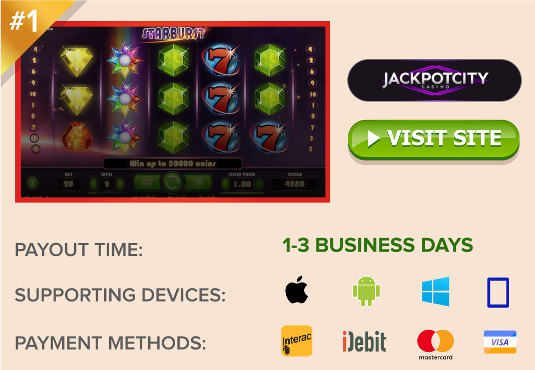A Grinders Guide to 2 Face 21 Rules & Strategy
Playing for Keeps: Learn How to Play 2 Face Blackjack the Right Way
 The title of this game sounds deceptive, if not vindictive. I assure you, there’s nothing malevolent about it. The name cleverly refers to the fact that the dealer may have to expose his down-card, if the one that’s already showing is an ace or face card. Thus, it implies that the dealer may have to show ’two face’ up cards.
The title of this game sounds deceptive, if not vindictive. I assure you, there’s nothing malevolent about it. The name cleverly refers to the fact that the dealer may have to expose his down-card, if the one that’s already showing is an ace or face card. Thus, it implies that the dealer may have to show ’two face’ up cards.
As with any blackjack variant that favors the player, the rules must swing the pendulum back in the other direction. In this case, a player blackjack pays 6:5, and the game is played with a Spanish Deck (48 cards, no 10s).
Is the part-time double exposure of the dealer’s hand worth the trade-off? Let’s take a closer look…
How to Play 2 Face Blackjack
The hardest thing about playing this game is actually finding it available in a casino, online or on land. According to the latest documentation from its creators at Xcite Gaming, it is only authorized in the state of Nevada, USA, and is available at two Las Vegas casinos; Paris Las Vegas and Sunset Station. However, Xcite Gaming has a contract with the Ontario Lottery and Gaming Corp (OLG), which could see Two Face BJ coming to Ontario casinos in the future.
As for game play, there are only three major differences between traditional blackjack and the 2 Face edition:
- Any time the dealer’s up-card is a Face Card or Ace, the hole card must also be turned face-up.
- All 10s are removed from the deck, resulting in a 48-card Spanish deck.
- A Player Blackjack pays 6 to 5 (not the usual 3 to 2).
There are advantages and disadvantages to these rule alterations. On the plus side, removing 10s from the deck slightly increases the odds that the dealer will have to expose his hole card. Players will see both cards 33.33% of the time. When this happens, the player’s best decisions become obvious.
However, the player only sees the hole card when the dealer has a great up-card (Face or Ace) to begin with, thereby reducing the odds that they’ll win the hand. Plus, there’s the diminished payout for blackjack and use of a Spanish Deck, which slide the house edge more to the casino’s favor.
Specific Rules of Play
- Decks: 8 Spanish Decks (48 cards each, no 10s)
- Soft 17: Dealer Hits
- Doubling: Yes, on any total of 9+
- Splitting: Yes, 1x
- Double after Split: Yes
- Resplit Aces: No
- Draw to Split Aces: No
- Tie for Blackjack: Push
- All other Ties: Push
- Blackjack Pays: 6 to 5
Side Bets: 2 Face Blackjack comes with one optional Bust It Side Bet.
House Edge / Return to Play (RTP)
throw all the rules into the melting pot, and the end result, by my calculations, is a house edge of 2.27% (RTP 97.73%). That’s a lot more harsh than most blackjack variants. so, to answer our earlier question, no – it’s really not worth the trade off.
If you like the idea of seeing the dealer’s hole card, you’d be far better off playing Double Exposure Blackjack. In that version, you get to see both of the dealer’s cards in every hand, not just one-third of all hands. Other player advantages in that game combine to deliver a much lower house edge of 0.32% (RTP 99.68%).
2 Face 21 Strategy Charts
The strategy charts for this game are unlike most. This is because there will be situations where you know the dealer’s complete total, not just the up-card. Similar to Double Exposure Blackjack, tactical advice becomes much more precise under the right circumstances, especially against the dealer’s hard totals.
For reference:
- A hard total is a hand that does not have an Ace that counts as 11.
- A soft hand is one that does contain an Ace valued at 11.
I’ve split the strategy charts into three sections. One deals with the Player’s Hard Totals, another with Player’s Soft Totals, and the third with Paired Hands, where the player may or may not need to Split.
How to Decide a Player’s Hard Hand
When you, the Player, are dealt a Hard Total, follow this chart.
| Hard Total | Correct Action against Dealer’s Exposed Total |
| 5 | Double against 16; otherwise Hit |
| 6-7 | Double against 15-16; otherwise Hit |
| 8 | Double against 13-16; otherwise Hit |
| 9 | Double against 6 or 12-16; otherwise Hit |
| 10-11 | Double against 2-8 or 12-16; otherwise Hit |
| 12 | Stand against 13-16; otherwise Hit |
| 13 | Stand against 6 or 12-16; otherwise Hit |
| 14 | Stand against 4-6 or 12-16; otherwise Hit |
| 15-16 | Stand against 2-6 or 12-16; otherwise Hit |
| 17 | Stand against 2-9 or 12-17; otherwise Hit |
| 18 | Stand against 2-18; otherwise Hit |
| 19 | Stand against 2-19; otherwise Hit |
| 20-21 | Stand |
How to Decide a Player’s Soft Hand
When you, the Player, have a Soft Total, follow this chart.
| Soft Total | Correct Action against Dealer’s Exposed Total |
| 13-14 | Double against 12-16; otherwise Hit |
| 15 | Double against 6 or 12-16; otherwise Hit |
| 16 | Double against 5-6 or 12-16; otherwise Hit |
| 17 | Double against 4-6 or 12-16; otherwise Hit |
| 18 | Double against 5-6 or 12-16; Hit against 9 or 11; otherwise Stand |
| 19 | Hit against 20; Double against 5-6 or 12-16; otherwise Stand |
| 20 | Double against 15-16; otherwise Stand |
| 21 | Double against 16; otherwise Stand |
Conditions for Splitting Pairs
Paired hands are trickier than most. Sometimes it’s worth splitting those pairs, and sometimes it’s not. can get tricky. This last chart will keep you in line with the highest possible RTP.
| Pair | Correct Action against Dealer’s Exposed Total |
| Ace-Ace | Split against 2–90 or 12-16; otherwise Hit |
| 2-2 | Split against 3-7 or 12-18; otherwise Hit |
| 3-3 | Split against 3-8 or 12-18; otherwise Hit |
| 4-4 | Split against 12-16; otherwise Hit |
| 5-5 | Double against 2-8 or 12-16; otherwise Hit |
| 6-6 | Split against 5-6 or 12-17; otherwise Hit |
| 7-7 | Split against 2-7 or 12-17; otherwise Hit |
| 8-8 | Split against 2-9 or 12-18; otherwise Hit |
| 9-9 | Split against 2-3, 7, 12-16 or 18-19; otherwise Stand |
| 10-10 | Split against 15-16; otherwise Stand |
 Jackpotcity.com is our editorial pick for your gaming needs. Currently offering an entire suite of casino games, as well as a wide range of Canadian deposit options, JackPotCity truly offers world-class gaming.
Jackpotcity.com is our editorial pick for your gaming needs. Currently offering an entire suite of casino games, as well as a wide range of Canadian deposit options, JackPotCity truly offers world-class gaming.





